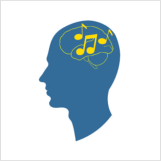March 6-8, 2014
Neurobiology and Neurology of Highly Skilled Motor Performance in Musicians
Schmitt Program on Integrative Brain Research (SPIBR)
Neurobiology and Anatomy Department
Thursday, March 6, 2014 4:00 PM - Saturday, March 8, 2014 12:00 PM
 Daily tasks such as tying shoelaces, typing, and writing require the performance of coordinated actions. These actions require motor learning for accurate and precise integration of cognitive processing, sensory information, and motor execution. More complicated motor tasks, such as playing a musical instrument, require movements of such high accuracy and precision that numerous practice hours are necessary. The practice of such skilled tasks requires high repetition of specific movements and controlled adjustment of these movements in response to errors. This learning process requires the integrative action of mechanisms in the cerebral cortex, basal ganglia, cerebellum, brainstem, and spinal cord in order to modify future execution based on past results. It is accompanied by changes in brain function that allow for automatic execution once the skill is obtained. Unfortunately, that brain plasticity may be aberrant and lead to the movement disorder dystonia. Dystonia is characterized by unwanted involuntary muscle contractions that cause abnormal postures and movements. Instrumental musicians are at risk for developing a focal dystonia that affects the hand or face (embouchure). Focal dystonia in musicians is typically task specific, occurring when playing the instrument but not while performing other tasks that use the same muscles. Even though the high repetition in practice and precise integration of cognitive, sensory, and motor mechanisms seem to be risk factors for the aberrant plasticity in dystonia, the underlying cause remains unknown. In most cases, dystonia is career ending.
Daily tasks such as tying shoelaces, typing, and writing require the performance of coordinated actions. These actions require motor learning for accurate and precise integration of cognitive processing, sensory information, and motor execution. More complicated motor tasks, such as playing a musical instrument, require movements of such high accuracy and precision that numerous practice hours are necessary. The practice of such skilled tasks requires high repetition of specific movements and controlled adjustment of these movements in response to errors. This learning process requires the integrative action of mechanisms in the cerebral cortex, basal ganglia, cerebellum, brainstem, and spinal cord in order to modify future execution based on past results. It is accompanied by changes in brain function that allow for automatic execution once the skill is obtained. Unfortunately, that brain plasticity may be aberrant and lead to the movement disorder dystonia. Dystonia is characterized by unwanted involuntary muscle contractions that cause abnormal postures and movements. Instrumental musicians are at risk for developing a focal dystonia that affects the hand or face (embouchure). Focal dystonia in musicians is typically task specific, occurring when playing the instrument but not while performing other tasks that use the same muscles. Even though the high repetition in practice and precise integration of cognitive, sensory, and motor mechanisms seem to be risk factors for the aberrant plasticity in dystonia, the underlying cause remains unknown. In most cases, dystonia is career ending.
The symposium will focus on three themes:
- The neurobiology of motor control and learning in highly skilled tasks
- The neurology of dystonia in musicians
- The neuroscience of musical performance and potential strategies for injury prevention.